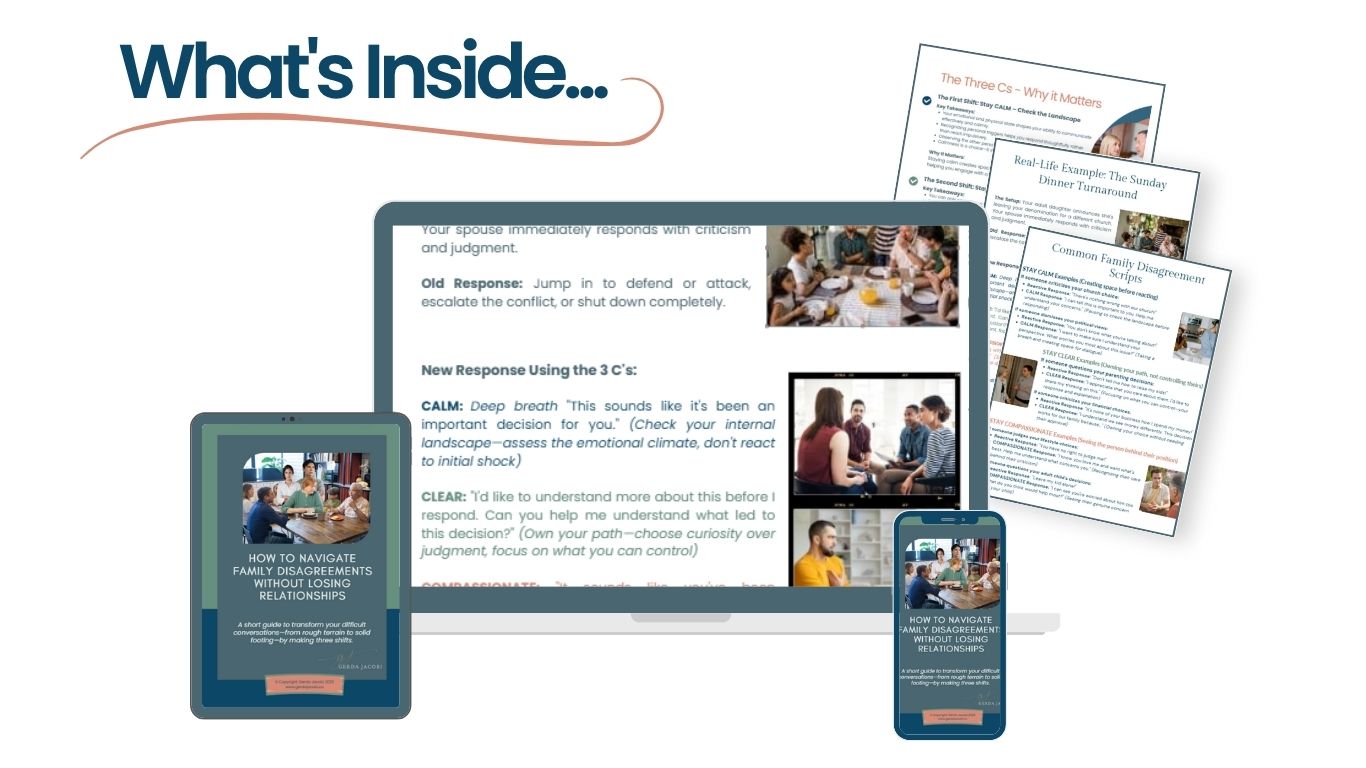We began this series in Part 1 with some reflections that I shared after a morning walk with my dogs. I shared how navigating unexpected encounters on a trail isn't so different from handling tough conversations. Whether with a stranger and their dog or a friend on social media, the moment you sense potential tension, your instincts kick in.
Moving Beyond Natural Reactions
Having explored in Part 2 how our natural wiring shapes the way we assess and respond to relational risks, we now turn our focus to
two essential practices for navigating difficult conversations with wisdom and authenticity: risk management and self-management.
Risk management is about assessing the situation wisely, identifying potential challenges, and taking proactive steps to minimize harm or conflict. Self-management, on the other hand, is about managing our internal responses—our emotions, thoughts, and behaviors—during the conversation itself, ensuring we respond thoughtfully rather than react impulsively.
Both are necessary for meaningful and productive conversations. Risk management helps us decide when and how to engage, while self-management determines how we handle ourselves in the moment. These two strategies complement each other, like two sides of the same coin.
Mastering the balance between risk management and self-management transforms how we engage in difficult conversations: it enables us to navigate them not with avoidance or defensiveness, but with wisdom, authenticity, and grace.
Before we dive deeper, think about your own approach. What’s your instinctive first reaction when you sense a tough conversation coming? Do you brace yourself for conflict, try to smooth things over, or hesitate altogether? That gut reaction is a starting point, but the real transformation happens in how you manage the situation once you’re in it.
Let’s explore how to move beyond instinct, balancing wisdom and presence to navigate tough conversations with confidence.
In something as mundane as dog walking, and in difficult conversations, I've learned that navigating risks requires balancing two approaches: risk management and self-management.
Assessing the Path Ahead: Strategic Risk Management Before - and While Engaging
Risk management is the practice of identifying potential challenges and making informed decisions about how to proceed in order to minimize harm. For example, when walking my dogs, I scan ahead for other dogs or potential hazards, perform a quick check for the local bobcat in the backyard before letting them out, and assess my own readiness for the walk. It becomes a background process—something I do almost automatically, a routine of vigilance and foresight.
In conversations, risk management looks similar: I assess the topic, context, timing, my own state, and the other person's state before engaging. I consider potential trigger points and prepare accordingly. While this includes awareness of my internal state, the focus remains on gathering information to make wise decisions about engagement.
Self-Management: Navigating During Engagement
Self-management addresses how we handle ourselves once we're in the situation—developing our capacity to respond thoughtfully rather than reactively. With my dogs, this means:
- Maintaining focus even when distracted
- Recognizing when I'm becoming anxious and how that affects my dogs
- Knowing my limits and my dogs' limits—when it's time to end the walk and return home
- Being able to pivot and adjust when circumstances change
- Staying present rather than letting my mind wander
The parallel in conversations is striking: staying present rather than mentally preparing my next point, recognizing my rising emotions, knowing when I need to take a break, and being flexible enough to shift approach when the conversation takes an unexpected turn.
The Dance Between Managing Risk and Self
Risk management creates the container that makes self-management possible and sets the foundation. Having risk assessment running "under the surface" as a habit means I can relax and enjoy the walk confidently—and then at that stage, self-management needs to become more intentional. The risk is identified; now how will I manage myself in relation to it? If I let my guard down, I could quickly find myself in a sudden encounter, entirely surprised and unprepared.
With risk management and awareness running under the surface, I have to up the ante on self management while navigating an interaction or a dog walk. It's important to remain alert, focused and intentional. With this combination of risk management running under the surface and self-management, I can be free to give my dogs and myself more freedom to explore and enjoy the walk.
While risk assessment is wise stewardship, I must regularly examine whether my management is motivated by prudence or by things like fear or not willing to take risks in unknown territory, wanting to stay safe and missing out on opportunities. Am I controlling my environment out of wisdom or fear?
The most effective approach combines clear-eyed risk assessment with self-awareness and purposeful choice. We acknowledge our natural tendencies without being ruled by them. We evaluate potential challenges without letting fear have the final word. And we choose engagement strategies based on what serves truth and love, and freedom to flourish and to be authentically human, rather than defaulting to what feels most safe and comfortable.
This balance allows us to make wise choices about when to avoid, when to detour, and when to engage directly—not based on our comfort, but on what each situation truly calls for.
Of course, no amount of assessment or preparation can prevent all difficult encounters. Just like a bobcat might leap over my fence despite my vigilance, some challenging conversations will find us no matter how carefully we prepare. The value of our approach isn't that it prevents all pain, but that it helps us respond with greater wisdom and presence when difficulties do arise.
The Dance Continues: Moving from Understanding to Practice
As we've explored these approaches—risk management and self-management—it becomes clear that both are essential rhythms in the dance of meaningful interaction. While assessing risk has its important place, developing our internal capacity for thoughtful response offers a more fulfilling path forward.
In the same way that a skilled dog walker eventually moves beyond simply avoiding all other dogs to teaching her pets how to interact appropriately, we too can grow beyond merely sidestepping difficult topics to engaging with them purposefully and productively.
In my next reflection in part 4, I'll explore how to navigate those unexpected moments when conversations suddenly shift—just like when a seemingly friendly dog unexpectedly stiffens and growls. While preparation and self-awareness give us a foundation, what happens in the moment still requires agility. I'll share how internal narration—built on that foundation—creates the crucial space to decide whether to engage, detour, or defer. We'll explore how recognizing signals, naming what's happening, and maintaining a sense of shared humanity can transform potentially tense exchanges into opportunities for connection. This complete toolkit becomes especially valuable for those unexpected turns that no amount of preparation can prevent—helping us approach interactions with lightness and confidence rather than defensiveness and anxiety.
(Continued in Part 4: Turning Points in Unexpected Encounters)

